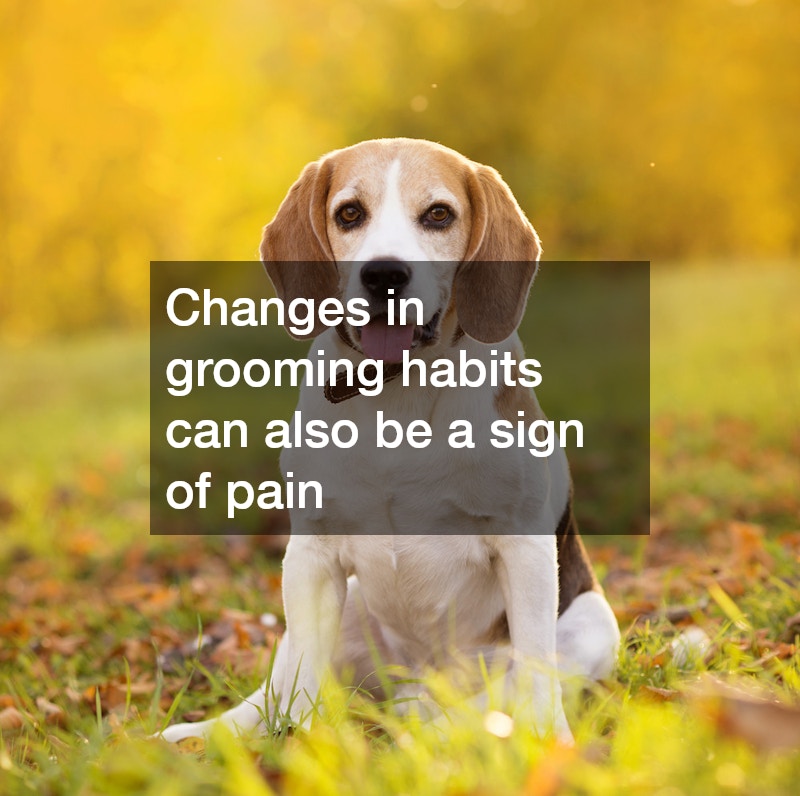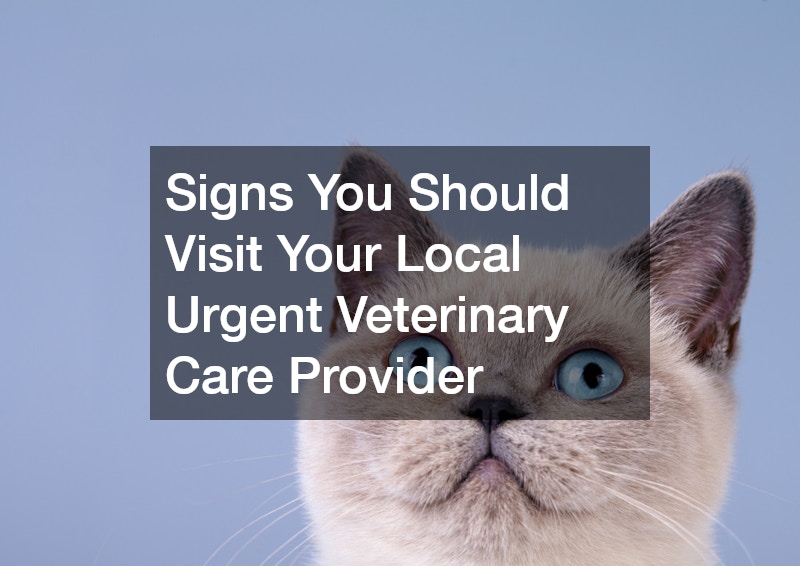
It’s crucial to be aware of the signs that indicate when it’s necessary to visit your local urgent veterinary care provider for your pet. Understanding these signs can help you ensure your pet receives timely medical attention. Pets, like humans, may experience a variety of health issues that can escalate into emergencies. Recognizing these early warning signs can help you take swift action, ensuring your beloved companion gets the care it needs.
The importance of being aware of your pet’s behavior and physical condition cannot be overstated. An unexpected change in your pet’s normal routine, including eating, sleeping, or playing, may warrant immediate medical assessments. Regular vet visits may not always catch acute issues, so having baseline knowledge of potential emergencies can empower pet owners to act decisively.
Common Signs of Pet Emergencies
Observing changes in behavior is critical; for instance, sudden lethargy or excessive agitation may signal discomfort or distress. If your pet appears disoriented or is having difficulty coordinating movements, these can be indicators of emergencies that require immediate veterinary attention.
Other signs include severe vomiting, diarrhea, or bleeding. A pet that exhibits these symptoms may be facing a critical health issue that cannot wait for a regular check-up. Additionally, if your pet has difficulty breathing, wheezing, or is thought to be choking, seeking urgent care is paramount to prevent a potentially life-threatening situation.
Any signs of injury, such as limping, swelling, or visible wounds, can also be classified as emergencies. Recognizing these signs in your pet’s behavior and health is the first step in ensuring they receive the attention they need during critical moments.
When to Worry About Your Pet’s Eating Habits
An immediate concern arises if your pet has suddenly developed a lack of appetite or refuses to eat for more than 24 hours. This could indicate severe dental issues, gastrointestinal problems, or even systemic diseases that warrant urgent attention.
In contrast, overeating can also be troubling, especially if your pet has consumed something harmful or toxic. Vomiting after consuming food or an inability to hold anything down may suggest a blockage or serious digestive upset. When pets show drastic changes in their eating habits, they may experience pain or distress that should be promptly evaluated in an emergency setting.
As a pet owner, being vigilant about such changes will help you detect potential issues. If your pet’s eating habits are accompanied by other signs like lethargy or abnormal behavior, it solidifies the need for immediate veterinary care to address possible underlying health concerns.
How to Identify Signs of Pain or Discomfort in Your Pet
This section delves into the various behaviors and physical signs that indicate your pet may be in pain or discomfort, requiring immediate veterinary attention. Common visual indications of pain in pets include whining, growling, or excessive vocalization. They may also exhibit aggressive behavior, even if they are normally docile, when they are hurt.
Changes in grooming habits can also be a sign of pain; for instance, if a pet suddenly stops grooming or excessively licks a specific area, this could indicate pain or a potential injury. Furthermore, if your pet is reluctant to move, play, or engage with family members, it often points to discomfort that should not be ignored.
Physical changes such as panting, elevated heart rates, or a swollen abdomen can indicate serious underlying conditions. Observing these signs early can ensure that your pet is treated appropriately and in a timely manner by veterinary professionals.
What to Do if Your Pet Has a Severe Injury
If your pet has suffered a fall or been involved in an accident, check for signs of obvious injuries such as bleeding, swelling, or fractures immediately. If you notice any of these symptoms, do not hesitate to take your pet to an urgent veterinary care provider.
In the case of deep cuts or wounds, applying clean cloths to stem bleeding while you transport your pet to the clinic is crucial. Keep your pet calm and immobile as much as possible during the process. This not only ensures their comfort but also minimizes the potential for further injury until professional help is received.
Severe injuries can escalate quickly, and even minor signs may lead to significant problems if not addressed. Ensure to document any visible injuries and describe any changes in behavior to the veterinary staff upon arrival to help in their assessment and treatment.
How to Tell if Your Pet Is Having an Allergic Reaction
Some common symptoms of an allergic reaction may include hives, swelling of the face, ears, or limbs, or excessive itching. If you observe your pet struggling to breathe or showing signs of distress, these can indicate a severe allergic reaction known as anaphylaxis, which is a medical emergency.
Additionally, gastrointestinal signs such as vomiting or diarrhea may accompany allergy symptoms and require urgent evaluation to prevent dehydration or further complications. It is essential to track any potential triggers your pet may have encountered, such as food, environmental factors, or insect bites, as this information helps veterinarians offer the correct diagnosis and treatment plan.
Being proactive and aware of your pet’s reactions to different situations can ensure that you act quickly. If you suspect your pet is experiencing an allergy-related emergency, seek immediate veterinary care, as time can be a crucial factor.
Being knowledgeable about the signs of potential emergencies in pets can help ensure timely intervention and care. It is important to remain vigilant about physical and behavioral changes that may indicate health issues. As responsible pet owners, understanding these signs prepares you to act quickly when your furry family member needs help.
It’s always better to err on the side of caution when it comes to your loved ones. If in doubt, don’t hesitate to consult a veterinarian for guidance; they are your best resource for ensuring your pet remains safe and healthy. Your quick response can make all the difference in critical situations, so stay informed and prepared.
By fostering a proactive approach to your pet’s health, you can enhance their quality of life significantly while reducing the risk of emergencies. Regularly monitoring your pet can help ensure a long and healthy life for your beloved companion.




